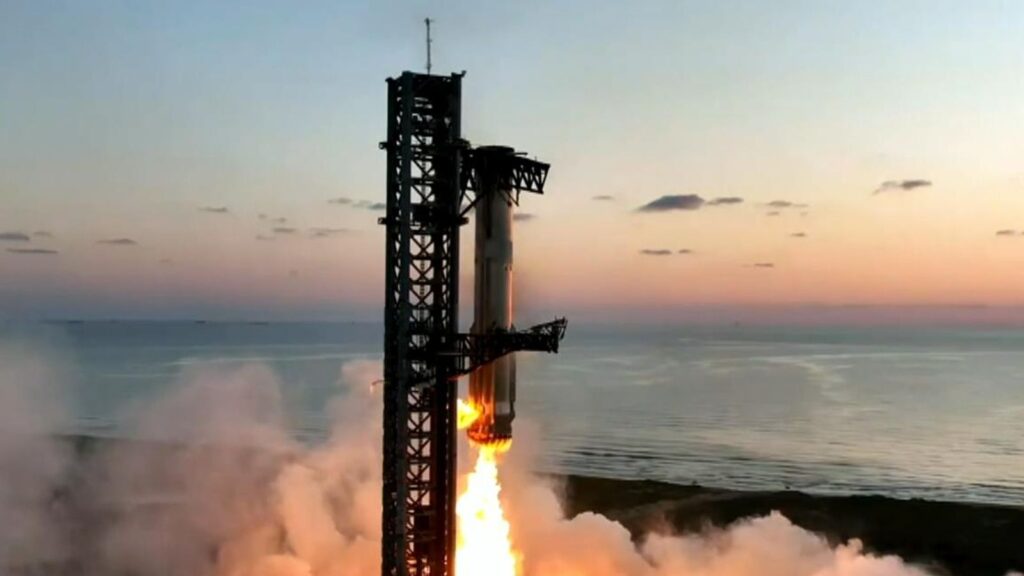
SpaceX achieved another historic milestone with the Flight 5 launch of its Starship booster, marking a new era in rocket recovery technology. In this flight, the Super Heavy booster was successfully caught by a pair of massive mechanical arms known as “Chopsticks”—a feature designed to make spaceflight more efficient and reusable.
After launching the Starship system into orbit, the booster descended back to Earth, where the “Chopsticks” caught it mid-air. This approach eliminates the need for traditional landing pads or recovery ships, further reducing costs and simplifying logistics. This method is part of SpaceX’s ambitious goal to make Starship fully reusable, paving the way for future missions to the Moon, Mars, and beyond.
What is the Chopsticks System?
The “Chopsticks” are giant mechanical arms attached to the launch tower, designed to catch the booster as it descends. This innovative recovery technique minimizes wear and tear on the booster, reducing turnaround time for future launches. The precision and engineering behind this system showcase SpaceX’s dedication to pushing the boundaries of space technology.
The Importance of Reusability
Reusability has been a core goal for SpaceX, with the ultimate aim of making space travel more accessible and sustainable. By recovering and reusing the Super Heavy booster, SpaceX can cut costs significantly, bringing Elon Musk’s vision of interplanetary travel one step closer to reality. This technology is crucial for future missions to the Moon, Mars, and even farther into space.
What’s Next for SpaceX?
With this successful recovery, SpaceX is set to focus on perfecting the Starship system for upcoming missions. The next steps include refining the booster’s landing mechanism and preparing Starship for more complex missions, including crewed flights to the Moon under NASA’s Artemis program.
This is just the beginning of what could be a new chapter in space exploration, with SpaceX leading the charge in developing reusable, cost-effective technologies that could revolutionize the future of space travel.
Stay tuned for more updates as SpaceX continues to make history!











